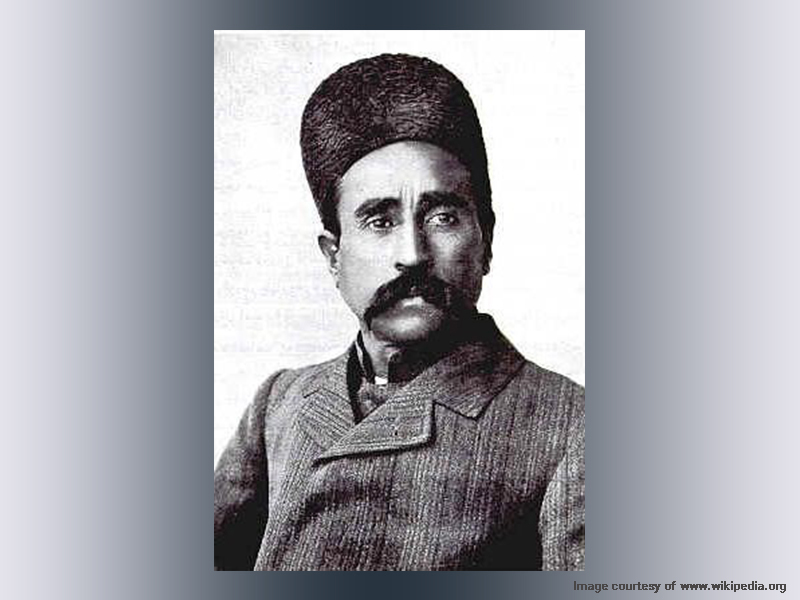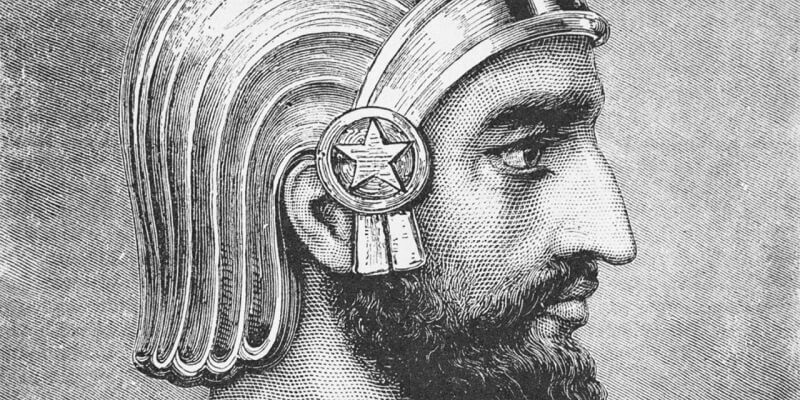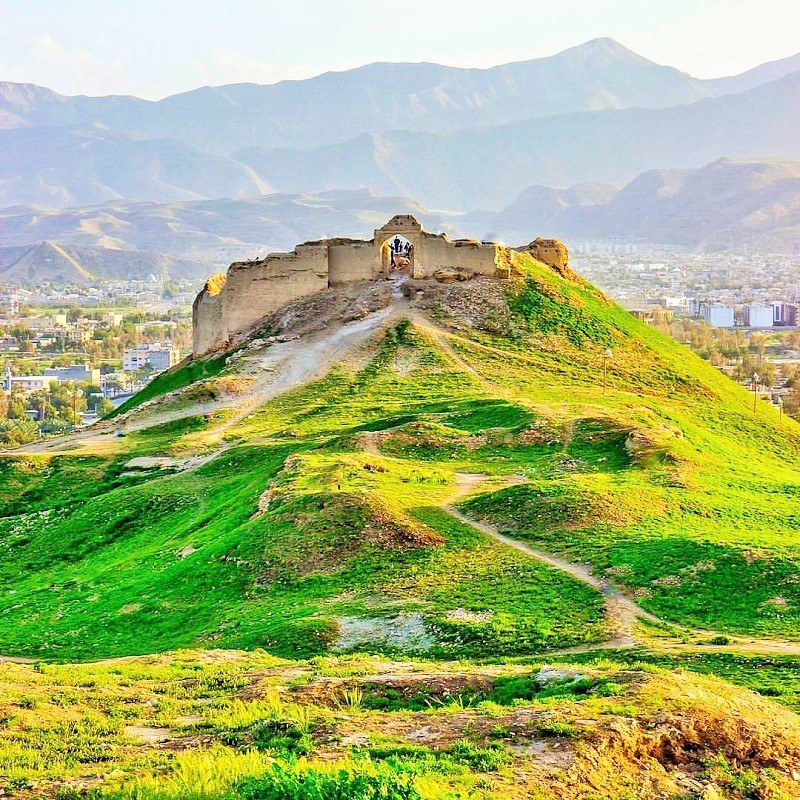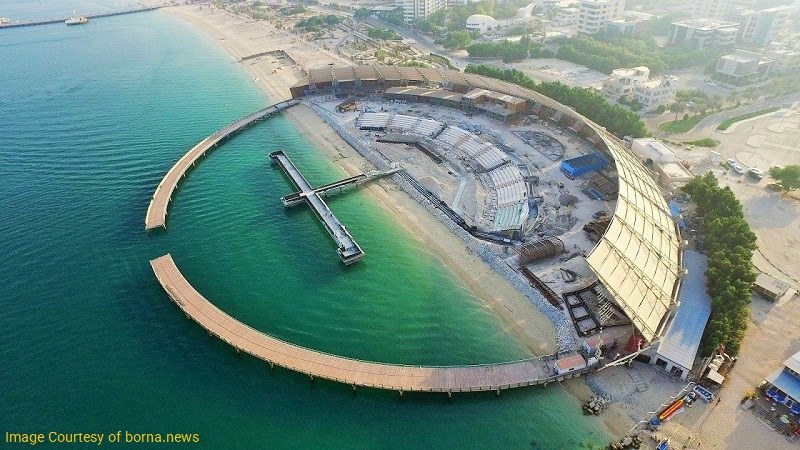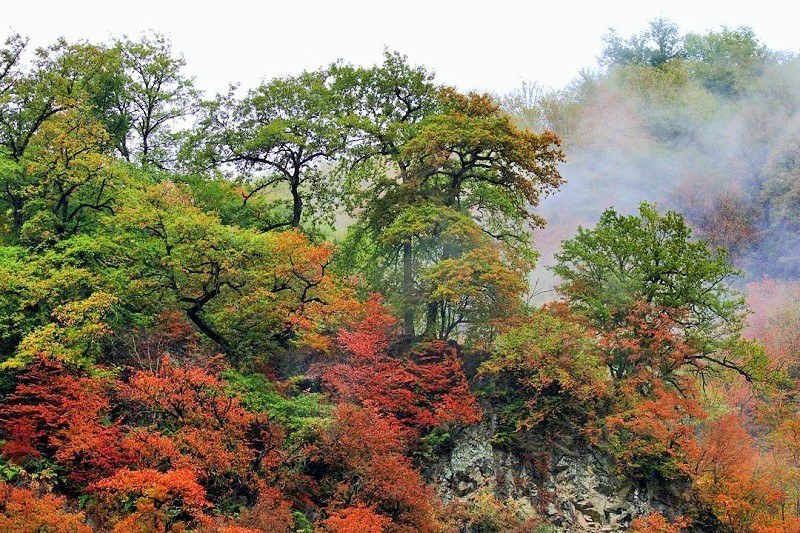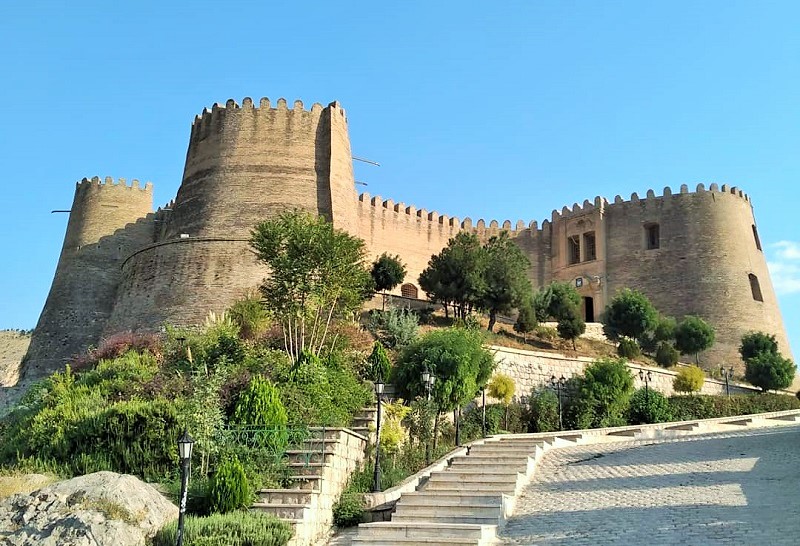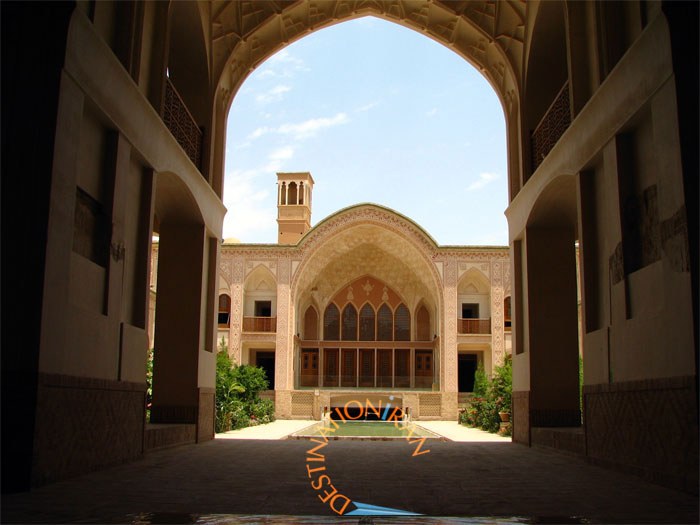
Introduction of Kashan
Many travelers, who make a journey to Iran, would like to visit Kashan tourist attractions because they know there are beautiful sites and various old and traditional arts attributed to this city. As it is on the main highway from Tehran to Isfahan and has got interesting places to visit, people usually stop here for a few hours if not for a night to learn more about it.
When it comes to certain handicrafts, ancient sites, and monuments, Kashan has got some highlights of Iran to offer to their visitors.
Geography of Kashan
The city is growing into a large urban center in Isfahan province. The altitude of the city is approximately 940m above sea level and the climate is dry with extremely hot summers and very cold winters. The reason should be sought in the existence of adjacent Dasht-e-Kavir (northern desert of Iran).
Karkas Mountains
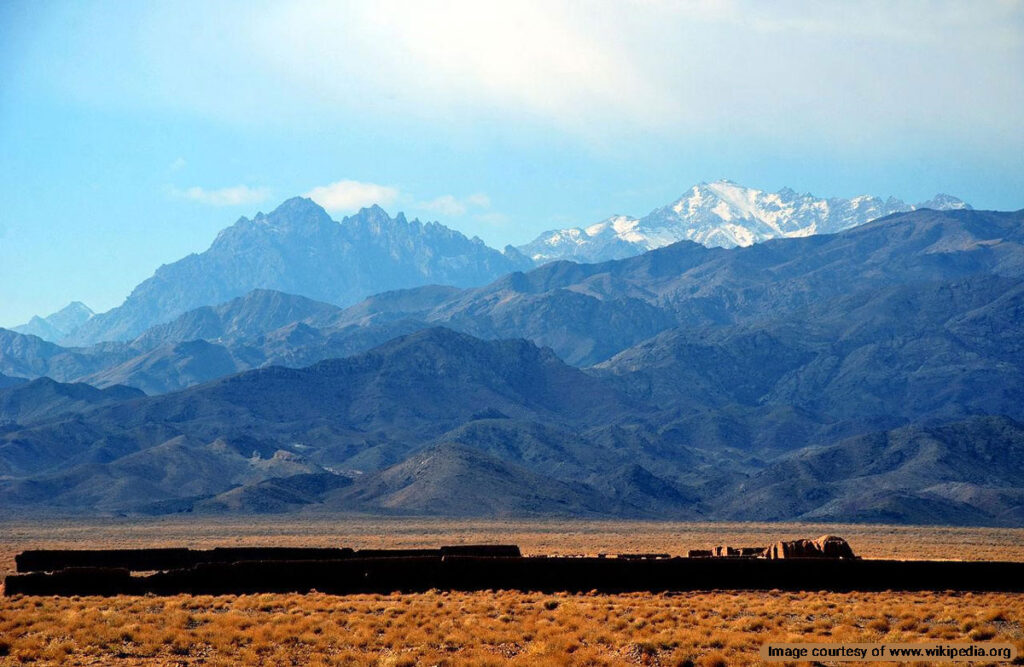
The Kashan Mountains, also known as the Karkas Range, form a natural enclosure to the west of Kashan. This mountain range stretches from northwest to southeast, reaching altitudes of up to 4,000 meters. The Karkas Mountains divide Kashan into two distinct topographic and climatic areas: the temperate western highlands and the arid eastern lowlands.
The mountains are characterized by their rugged terrain and sparse vegetation, primarily consisting of bushes and shrubs. Higher elevations are home to a variety of trees, including pines, cypresses, black poplars, elms, and ashes. The region is home to mammals such as goats, rams, boars, wolves, foxes, hyenas, wild cats, and leopards.
There are several species of reptiles and various birds, including the small black vultures (Karkas), which the mountains are named after.
Despite the arid climate, the region supports some small forests, although many have been depleted over time due to deforestation. The Karkas Range is an important aspect of the region’s water supply. Several small, seasonal rivers originating from the mountains flow towards the desert.
The most notable of these rivers is the Šāh-āb, which originates in the Qohrud Heights. The area is dotted with several springs, the most famous being the Cheshme Fin (Fin Spring), which provides a vital source of water for irrigation.
The average annual temperature in Kashan is 28°C and the average annual rainfall is 60-70 mm. With 247 kilometers distance from Tehran, Kashan is located at the south of Tehran.
How to Travel to Kashan
Here are different ways of traveling to Kashan:
- By car
It takes about 3 hours to travel from Tehran to Kashan while it takes about 2 hours and a half from Kashan to Isfahan. The route from Tehran to Isfahan is a highway and is one of the best roads outside the city in Iran.
It is possible to travel to Kashan by car and bus. The southern and western terminals of Tehran have buses leaving daily to Kashan.
- By train
It takes two and a half hours to travel from Tehran to Kashan by train. The train wagons of this route do not have separate compartments.
- By airplane
Currently, Kashan Airport has two flights to Mashhad weekly.
The historical mounds and sites in and around Kashan indicate the history-old fact of settlement in this part of Iran since antiquity. Fin village that used to be outside Kashan is now connected to the city and has added to the size of the city. Some of Kashan tourist attractions are either at Fin or between this village and Kashan itself.
Population & Economy of Kashan
The population of this city is approximately 400,000 and growing. There are a lot of new streets and residential areas under construction. This is because of the influx of people migrating from other towns and villages around Kashan to this city.
Demographic
Kashan’s population has been growing steadily, with an annual growth rate of approximately 1.44%. The majority of Kashan’s inhabitants are Muslim, predominantly following Shia Islam, which significantly influences the city’s cultural and social life. The traditional lifestyle and customs are still preserved in many parts of the city, although modern influences are also apparent.
Kashan, like many cities in Iran, has a rich tapestry of cultural diversity. Historically, Kashan had a small but vibrant Jewish community. However, over the years, the Jewish population has significantly dwindled, and today, Kashan is predominantly a Persian-speaking Muslim city. The Judeo-Kashani dialect, once spoken by the Jewish community, is now preserved mainly among older generations in immigrant communities in Israel and North America.
Education is highly valued in Kashan, with several schools, colleges, and universities providing quality education. The literacy rate in the city is relatively high, reflecting the importance placed on education by its residents.
Several large industries have recently been added to the industrial city at the northeast of Kashan converting the city into an employment magnet for the people living in the harsh climate around it. The summer temperature in and around the city is hard to tolerate unless one goes to the very nice villages at the foothills near this city.
Traditionally Kashan has been famous for producing silk, carpets, velvet, rose water and potteries. Today, in addition to those traditional products, Kashan’s automotive industry produces cars and motorcycles as well as other goods in its factories.
History of Kashan
Notable people
Kashan has been an influential region in Iranian history and has contributed several noteworthy figures that have impacted the Iranian history of art and culture.
Writers and Poets
Hafez Kashani: A renowned poet and writer known for his contributions to Persian literature.
Architects and Artists
Ustad Ali Maryam: A famous architect who designed many historical buildings in Kashan, including the Borujerdi House.
Abbas Ali Khan: An influential artist and calligrapher who contributed to the city’s rich artistic heritage.
Scholars and Scientists
Mirza Taghi Khan (Amir Kabir): A prominent statesman and reformer who played a significant role in the modernization of Iran during the Qajar dynasty.
Business and Industry
Abdolhossein Teymourtash: A notable politician and diplomat who was instrumental in the development of Iran’s oil industry.
Religious Figures
Mullah Mohammad Kazem Khorasani: A respected religious leader and scholar who had a significant influence on the religious community in Kashan.
For those who travel to Iran and plan to visit its attractions, history has been a major reason. Since more than 8000 years ago, there have been people who had settled and lived in Sialk mounds, which is inside Kashan today. The archaeological findings show the variety of artifacts produced, bought and sold there.
Like many other cities of Iran, Kashan has been a community of Zoroastrians before Arabs’ invasion. After the 7th century, despite a lot of efforts in order not to surrender, people had to open the city gates and submit to the Arabs and subsequently convert to the new religion. Together with Qom and Sabzevar, Kashan turned into a highly religious city after the advent of Islam in Iran. It is still in the same condition as it has been.
In the 11th century, the Khwarazmians built a fortress inside Kashan and a wall called Jalali to protect the inhabitants. Safavid kings showed particular interest in this area and Fin garden was created as a Persian Garden for Shah Abbas who stayed there during his trip to Kashan. Qajars continued this special attention especially at the time of Fath Ali Shah who added a few sections to the garden.
The city prospered a lot when foreign trade began to flourish between Iranian and Russian businessmen. Some of the old houses of Kashan, which now represent typical old houses of Iran, indicate the wealthy Iranians’ living conditions of that period. They also showcase the architecture of average Iranians’ houses regardless of decorations and size.
Historical Attractions inside the City
Here’s a list of Kashan historic attractions:
Abbāsi House
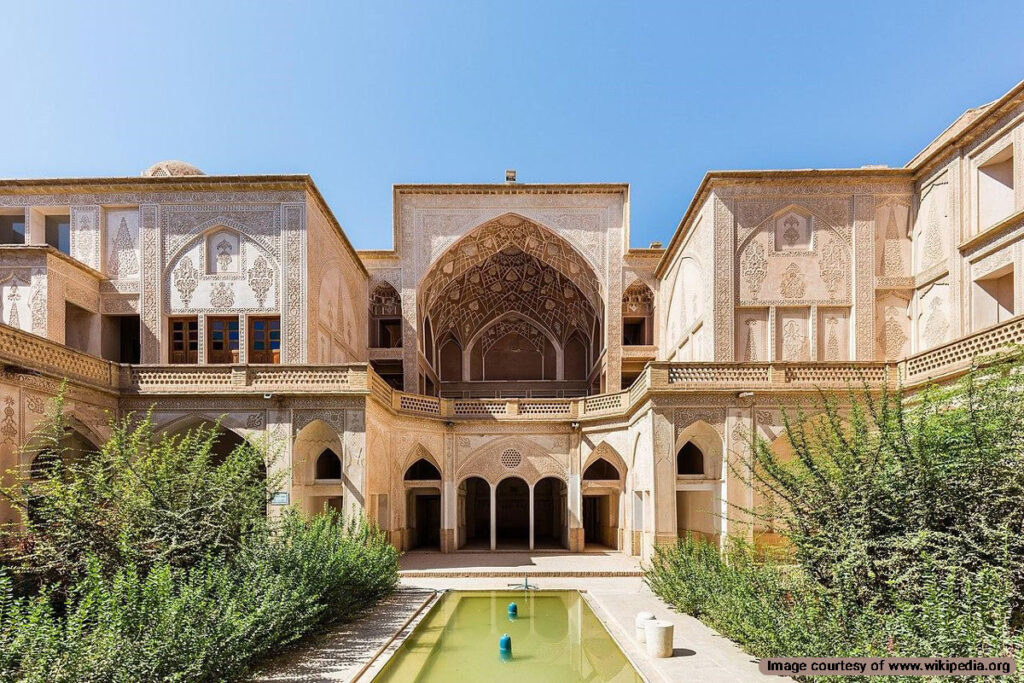
The Abbāsi House, also known as the Abbassian House, is a magnificent example of traditional Persian architecture located in Kashan. Built during the late 18th century by a wealthy glass merchant, this historic house museum is renowned for its stunning architectural features and intricate decorations.
The house consists of several courtyards, multistory buildings, and beautifully decorated rooms with plaster reliefs, mirror-work, and stained glass. The central courtyard features gardens, pools filled with Qanat water, and symmetrical designs that create a serene and picturesque environment.
Today, part of the Abbāsi House has been converted into a teahouse, a traditional restaurant, and a small shop, offering visitors a chance to experience the rich cultural heritage of Kashan. The house is a must-visit destination for those interested in Persian architecture and history.
Āmeri House
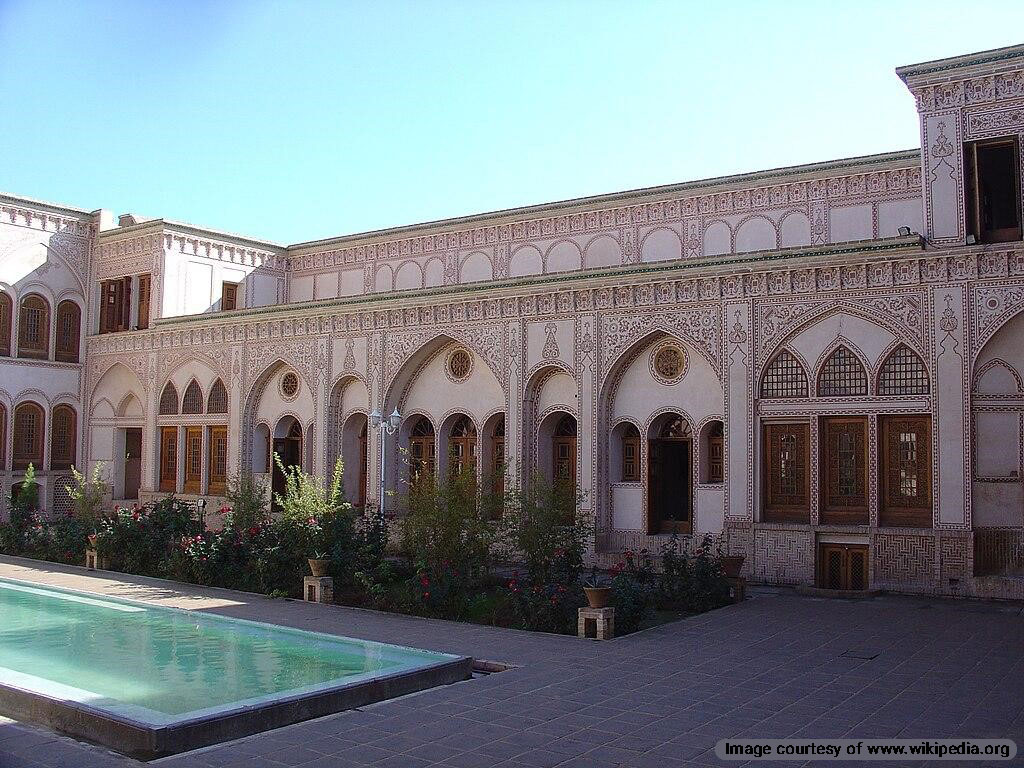
The Āmeri House, also known as Saraye Ameriha, is one of Kashan’s largest and most impressive historical houses. Built during the Zand dynasty for Agha Āmeri, the governor of Kashan, this grand residence spans approximately 9,000 square meters and includes 85 rooms, seven courtyards, and two bathhouses.
The house is renowned for its stunning architecture, featuring brick construction with mud and straw insulation, and beautifully decorated interiors with gypsum and mirror works. The Āmeri House boasts the tallest wind catcher (badgir) in Kashan, adding to its unique charm.
The Āmeri House has been restored and transformed into a traditional-style hotel, offering visitors a chance to experience the rich cultural heritage of Kashan. The property includes several main yards, each with pools and guest rooms, as well as amenities such as a carpet weaving house, art gallery, souvenir shop, coffee house, and restaurant.
Fin Garden
This beautiful garden is among the 9 selected Persian gardens inscribed as UNESCO’s World Heritage Sites’ list. Fin Garden is the place where Amir Kabir, a well-liked Iranian politician (Chancellor) of 19th century, was ordered to be murdered by the king.
Also, the cool and shady area of this garden in this dry and hot climate provides such a pleasant ambiance.
National Museum of Kashan
The construction of this building dates back to 1965. It is located on the western side of the Fin Garden of Kashan. More than 400 pieces from the 7th millennium BC to the contemporary era are exhibited in this museum.
Sialk Historical Mounds
Formerly outside the city, these mounds are now engulfed by Kashan development plans. They are some of the earliest settlements of ancient dwellers of this part of Iran after the ice age.
Aqa Bozorg Mosque
This is a late 18th-century mosque and theological school (madrasah) located in the city center. It has got a particular architecture with two courtyards in two levels and a relatively open domed chamber.
Kashan Bazaar
It is Some believe that this bazaar was first built during the Seljuks and renovated under Safavids. You can find several mosques, tombs, tim, timcheh, bath, etc in it. Timcheh-ye Amin-o-Dowleh is a highlight to see.
Soltan Amir Ahmad Bath
This traditional bathhouse is believed to date back to Seljuks’ Era (11-12 centuries). The beautiful design and decoration of this old structure draw many people to visit it and explore the ancient lifestyle of the local people.
Amin-o Dowleh Caravansary
Amin-o Dowleh Caravansary, or Timcheh-ye Amin-o-Dowleh, is located in the middle of the ancient bazaar of Kashan. This long and vast caravansary has 3 floors. This is a place for the purchase and sale of precious goods. The ceiling of this monument is decorated with a beautiful design covering a spacious and cozy area.
Friday Mosque of Kashan
This is the oldest monument of Kashan. It dates back to the Seljuk era. The monument has experienced few and sometimes widespread destructions. Each reparation and reconstruction has generated major changes. There are several historical inscriptions in this mosque.
Old Houses of Kashan
These houses have been generally built by the rich merchants of the 19th century when export-import business with other countries was flourishing. The thriving wealth of these businesses led to large families’ luxurious accommodation. Some of them are introduced here.
Adel Historical House
This beautiful traditional hotel is known as the pearl of Kashan. The construction of this house dates back to the Qajar period. The house is made of sun-dried brick and has a sunken courtyard and two floors.
Adel Historical House is one of the masterpieces of the old architecture of Kashan. It consists of luxurious decorations and embellishment. The original architecture of this house matches the culture and climate of Kashan.
Manouchehri Historical House
Manouchehri Traditional House, used today as hotel, dates back to 400 years ago. It is located in the historic district of Kashan between Sarpoleh and Sarsang neighborhood. This house is one of the unique monuments of traditional Iranian architecture.
Yasin Historical House
The house is located in Darband Aqa Neighborhood. The construction of Yasin Historical House dates back to the mid-19th century. The architects built this house under the order of Fat’h Ali Shah Qajar for Seyyed Mohammad Taqi Hosseini, a scholar of 18th century.
Tabatabai Traditional House
One of the most beautiful and spectacular monuments in Kashan is Tabatabai Traditional House, located in Sultan Amir Ahmad Neighborhood, an ancient district of Kashan. This is a masterpiece of ancient architectural art of Kashan.
The architects built this house in 1835 under the command of Seyyed Jafar Tabatabai, a famous carpet merchant of that time. This house has an area of 4700m2 and consists of 40 rooms, 4 courtyards, 4 basements, 3 windcatchers, and is located on 2 qanat routes.
Ehsan Historical House
Ehsan Historical house is located in Darb-e Baq Neighborhood, one of the oldest districts in Kashan. The house is inscribed as a National Heritage of Iran. The construction of this house dates back to the Qajar era.
The architects built this house in the traditional style of local architecture of Kashan. It consists of two floors and a large central courtyard with a rectangular pond surrounded by beautiful trees.
Morshedi Historical House
Morshedi Historical House is another traditional Iranian house built on two floors. Today it’s used as a traditional hotel. It is located in Darvazeh Esfahan Street. The construction of this house dates back to 250 years ago. Iranians renovated this house in 2015.
Historic Attractions outside the City
Here’s a list of Kashan’s fascinating places outside of it:
Noosh Abad Underground City (Ouee)
It is about 5km north of Kashan and under the village of Noosh Abad where people are living today. The underground city, also known as Ouee underground city, has been a hideout for the inhabitants to protect themselves from Arab invaders and others, who attacked Iran after that.
Niasar Fire Temple
This is a Sassanian Fire temple approximately 30km west of Kashan that is in good condition after some restorations. The domed chamber of this temple clearly shows the Chahar-Taqy architecture in ancient Iran.
Niasar Mithra Temple
This is a temple carved in the form of a cave also called “Ghar-e-Reis” (Boss’ Cave) by local people. It could well date back to the Parthian era.
Mashhad-e Ardahal (Mashhad Qali)
In 42 km west of Kashan, there is a village called Mashhad-e Ardehal. The tomb of Imamzadeh Sultan Ali, son of Imam Mohammad Baqir, is located in this area. Every year, in late September and early October, local people hold the ceremony of washing carpet at this place.
While the Islamic ceremonies are hold based on the lunar calendar, the ceremony of carpet washing is the only religious ritual of Islam held according to the solar calendar.
Tomb of Sohrab Sepehri
This is a famous name for all Iranians. Sohrab Sepehri is an Iranian poet, writer, and contemporary artist. The tomb of this popular poet is located in Mashhad-e Ardehal Village. This famous poet died in 1980.
Natural Attractions of Kashan City
Here’s a list of beautiful Natural spots outside Kashan:
Qamsar Town
Qamsar is a town near Kashan famous for producing rose water (Damask rose extract). Every year, in late April and early May, there is a ceremony held here called Golabgiri, means making rose water. On the other hand, each year in Mecca, Muslims wash the Kaaba with rose water of Qamsar of Kashan.
Abyaneh Village
This village is located in one of the highest altitudes of this province and also in Iran. The climate is temperate and its houses are made of adobe clay. Architects have built the houses of this village completely on the north of the steep slopes of a river. It also has wooden sash windows.
Soleimaniyeh Spring
This spring is located 6 km from the center of Kashan and in the southeast of the historic Fin Garden. With 12 stone-trough and 14 wells, this blue spring can be a qanat. It boils from the rocky cliffs called Dandaneh. In the past, people believed that this spring was the miracle of Solomon the prophet.






